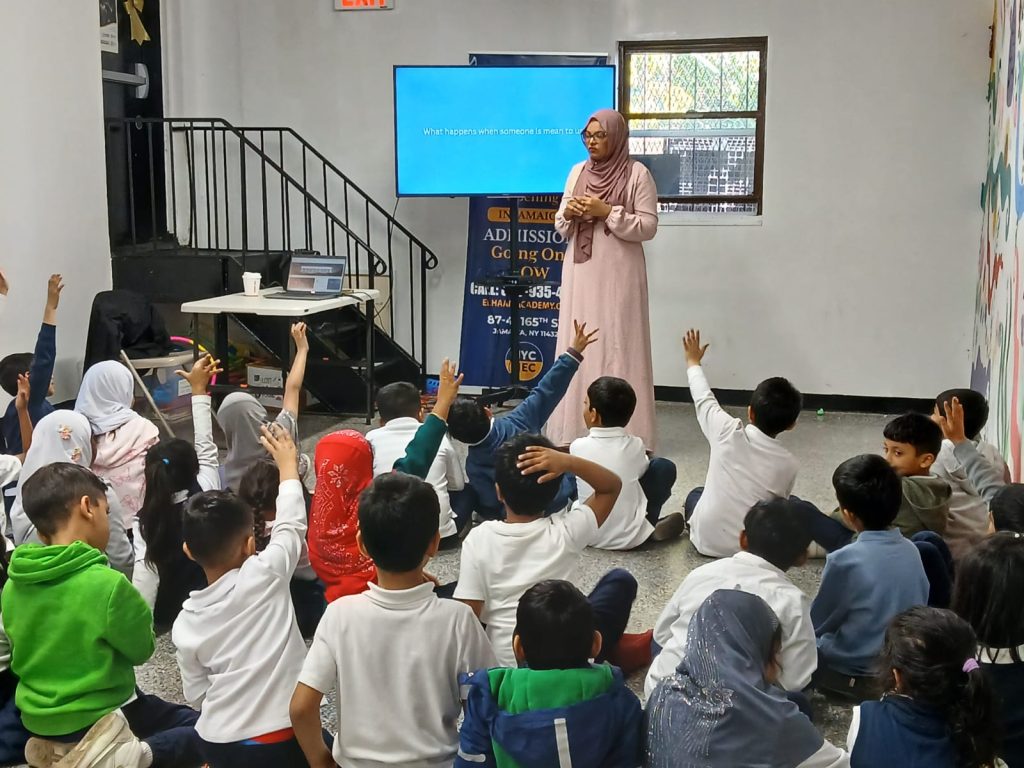In a world often marked by religious divisions, a group of Muslim and Jewish elementary school students gathered in Manhattan for a different purpose—to celebrate each other’s faiths, traditions, and shared humanity.
On a recent school day, the Jewish Heritage Museum in New York City became the backdrop for the fifth collaborative event between students from Kinneret Day School and Elhaam Academy. The program, which has brought together children from Jewish and Muslim backgrounds across multiple sessions, continued its mission of fostering peace, respect, and mutual understanding through hands-on learning and open dialogue.
The latest session focused on artifacts—objects that hold personal and religious significance. Students from both schools not only brought items from their homes but also shared the stories behind them. Through this, they explored themes like family, tradition, and interfaith connection. The children created illustrated gallery panels, blending art and storytelling. From shofars and Kiddush cups to Qurans and dhikr beads, each object was used to explain how cultural and spiritual values are preserved and passed down through generations.
According to one of the group summaries, these artifacts were described as “priceless and extremely important,” reflecting traditions that ranged “from cardboard to gold.” The children emphasized how such items “help young people learn about their religion” and how others can learn from them as well.
Another student group drew connections between the physical forms of their religious items. “The shofar is a long, round shape. The dhikr is a bowl shape. The Kiddush cup is a cup,” one group explained in their written reflections, noting that these sacred objects, while diverse, share spiritual symbolism.
Throughout the day, students worked together, drawing and decorating their artifacts, learning the meanings behind each other’s religious terms, and building friendships. Muslim children explored Jewish prayers, and Jewish students learned about Islamic artifacts, all while collaborating on visual representations of their shared experience.
Organizers praised the students’ engagement and curiosity, noting how naturally they communicated and collaborated. Teachers and chaperones described the atmosphere as warm, open, and deeply respectful.
While the June 11th session will mark the final installment of the program—with an exhibition, speeches from students, and a shared meal—the impact of the fifth gathering was already clear. It was less about academic achievement and more about emotional intelligence, intercultural empathy, and peace-building.
The long tables covered in hand-drawn illustrations, the soft hum of discussion, and the laughter shared among students made the museum feel less like a formal institution and more like a shared space of discovery and friendship.
This event, like the entire program, stood as a powerful example of what’s possible when education moves beyond the classroom and reaches into the heart—connecting children not just with information, but with one another.







